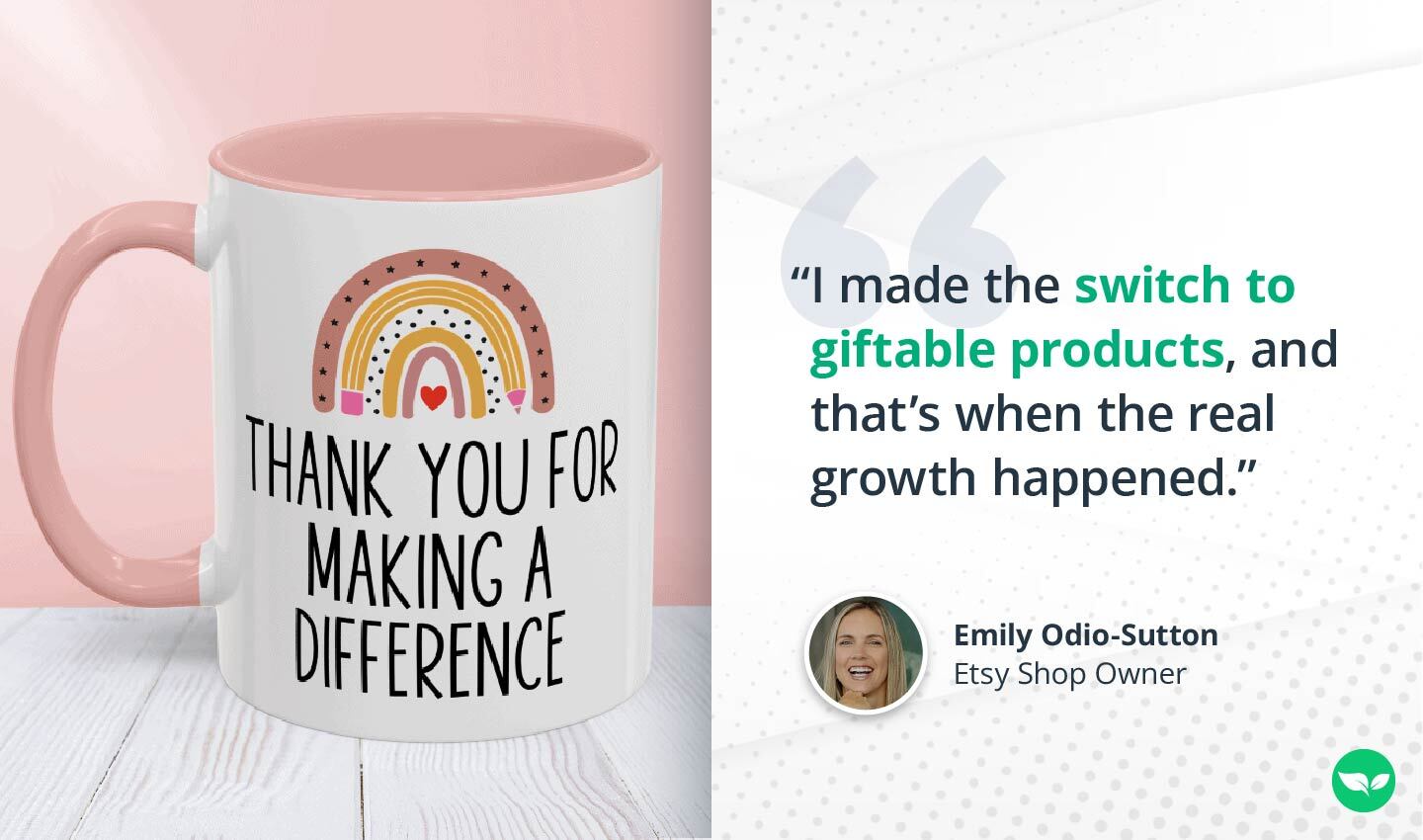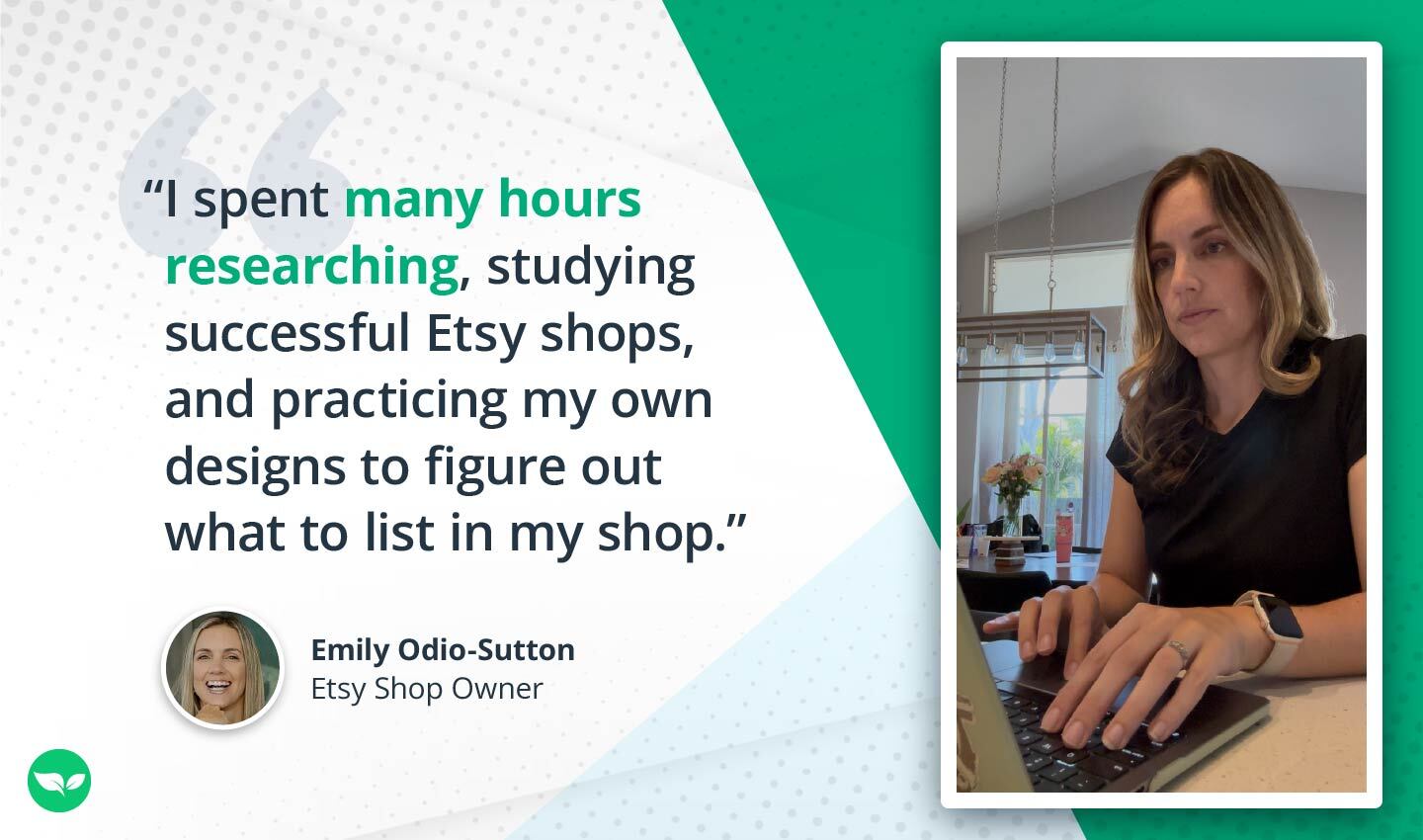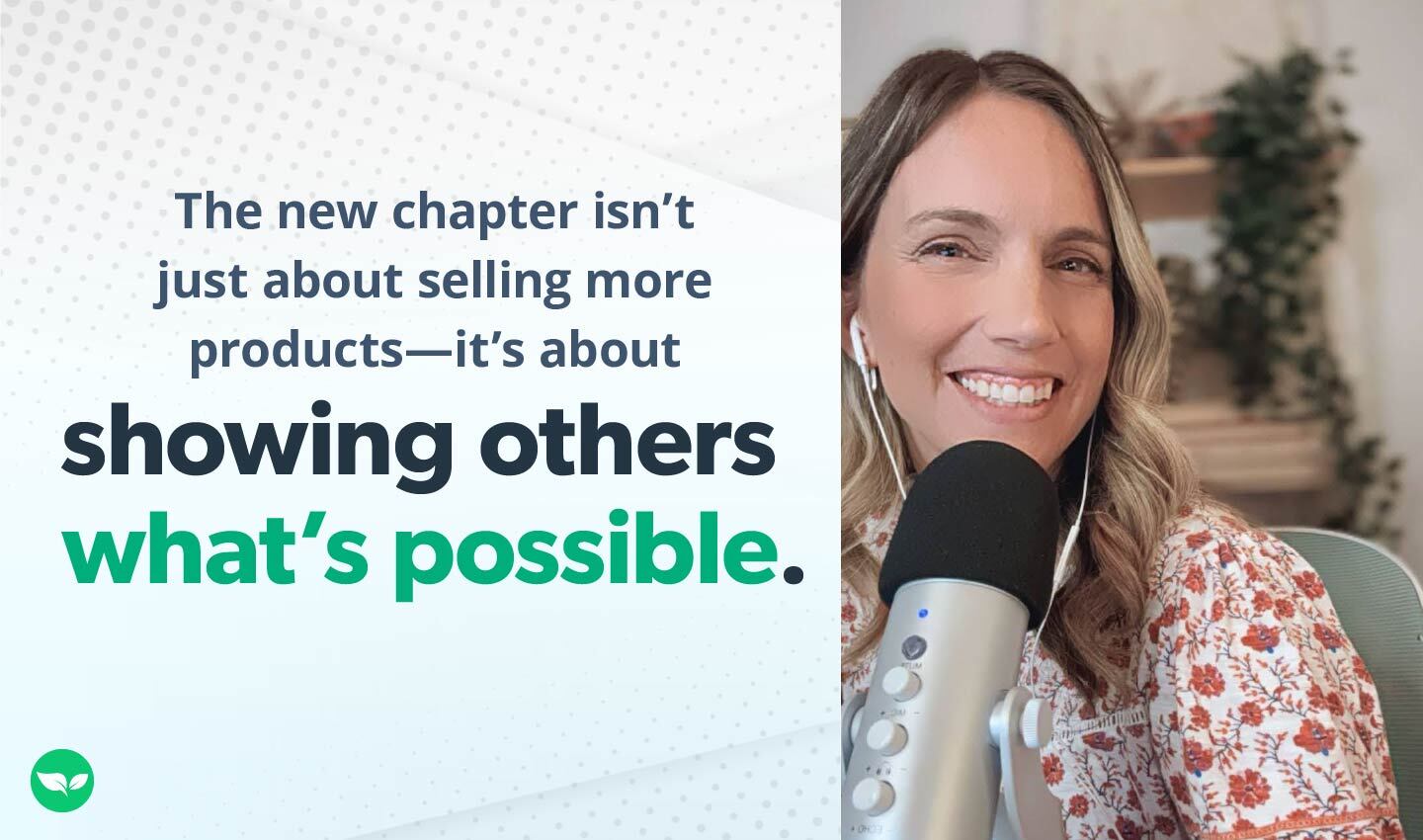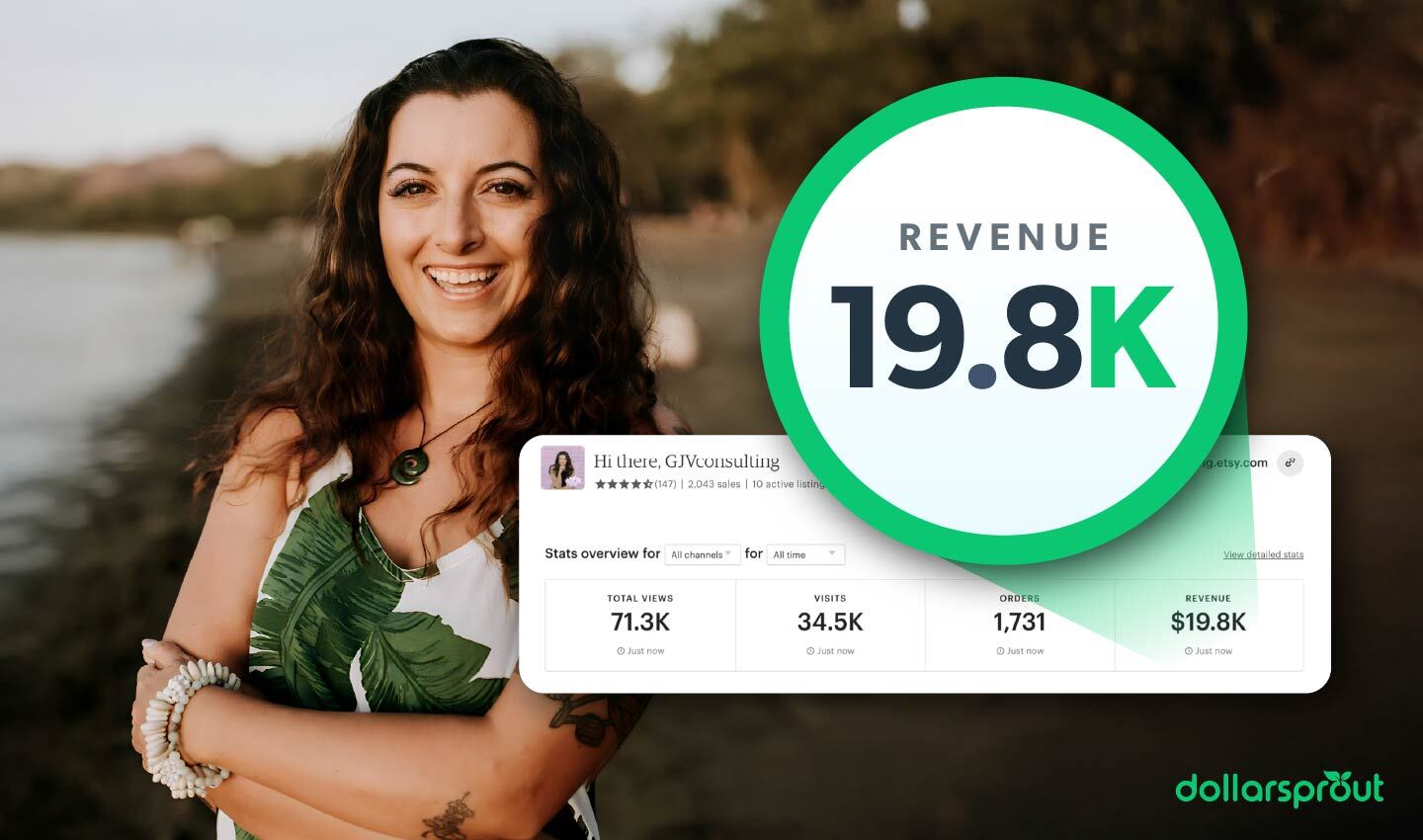From Higher Ed to Etsy Power Seller: How Emily Odio-Sutton Built a $560K POD Business
A former college administrator turned Etsy entrepreneur, Emily built a $560K print-on-demand business from scratch—without inventory, a team, or design experience. Below, a closer look at the strategy behind her shop’s rapid growth.
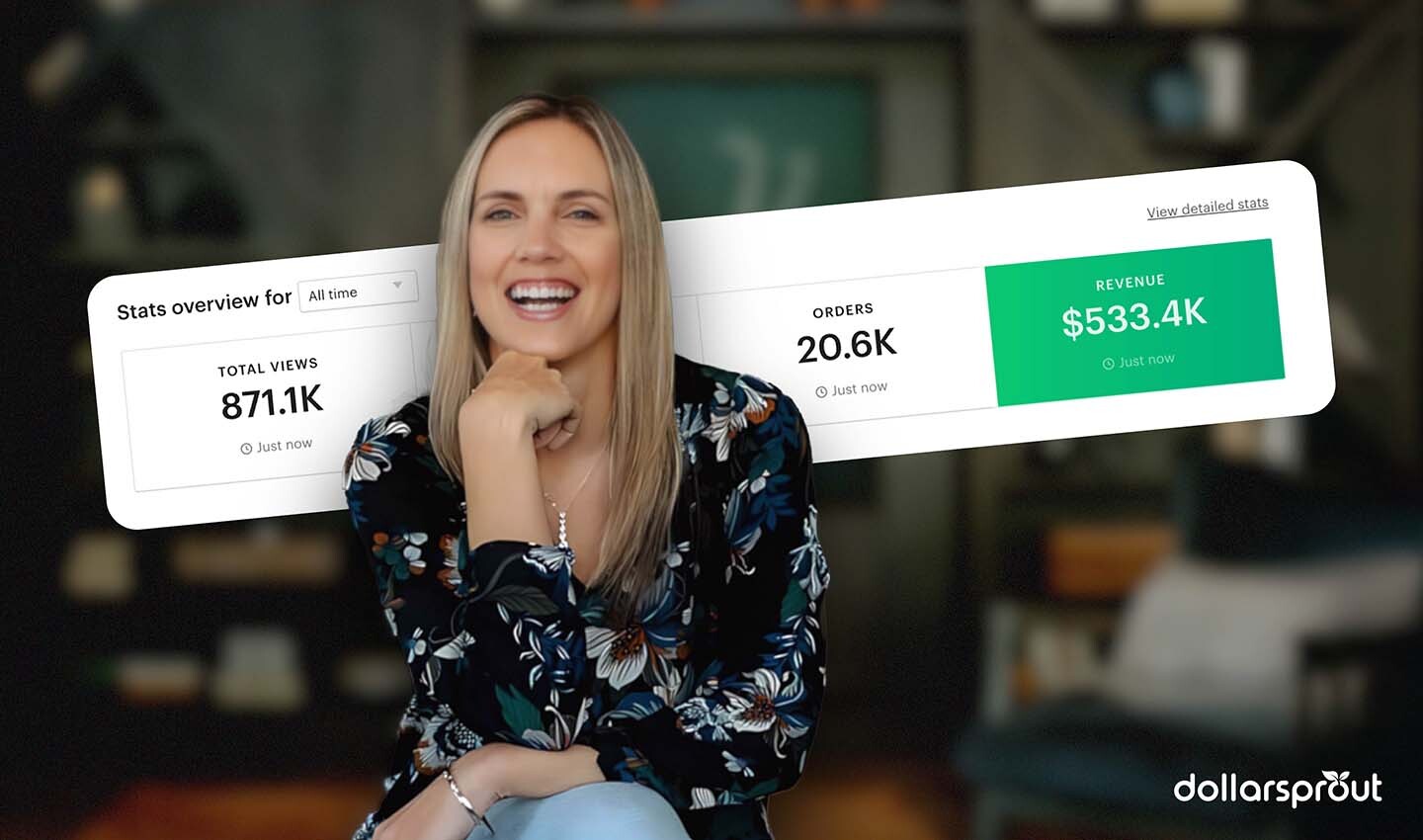
Emily Odio-Sutton never planned to become a full-time Etsy entrepreneur. But one night in early 2023, wide awake and doomscrolling through Instagram, she found herself searching for something more than campus emails and student meetings.
💰 Revenue: $560K+ in 2 years
🗓️ Started: January 2023
Featured Quote:
then design for a specific person and occasion. Clear always beats clever.”
She wasn’t chasing a big business—just a flexible way to earn a little extra money and carve out more time with her kids.
Like many side hustlers, she tested a few ideas before discovering a YouTube video about print-on-demand (POD). The model was low-cost, low-risk, and didn’t require any inventory or shipping—a perfect fit for a busy working parent.
Two years later, Emily has earned over $560,000 in revenue across her Etsy shops—94% of it from POD products. One of her bestsellers took just 15 minutes to design and has since generated more than $27,000 in sales.
By focusing on giftable products, smart keyword research, and repeatable design systems, she built a business that now supports her full-time. Here’s how she did it.
Why POD—and Why Gifts Changed Everything
Emily’s print-on-demand journey didn’t start with a master plan—it started with trial and error. She launched her Etsy shop with a handful of t-shirts and sweatshirts, thinking apparel might be the fastest path to sales—but early traction was slow.
“I was all over the place in the beginning,” she said. “I started with apparel… but quickly realized I wasn’t making the sales I wanted.”
The turning point came not from analytics or ad spend, but from something simpler: reading customer reviews. She noticed a pattern—buyers were describing her products as gifts. That one detail reframed everything.
“I kept seeing people mention how the items were perfect gifts,” she said. “That’s when I made the switch to giftable products, and that’s when the real growth happened.”
Rather than chase trends or try to build a cohesive apparel brand, Emily shifted her focus entirely toward products designed to be given—mugs with inside jokes, candles with niche references, journals tailored for teachers or coworkers.
By pairing simple design with thoughtful messaging, she leaned into Etsy’s core use case: people shopping for meaningful, affordable gifts.
This pivot—from selling “stuff” to solving gifting needs—became the foundation of her business, and the reason her products started to consistently convert.
But identifying what to sell was just the beginning—figuring out how to make it sustainable was the next step.
Related: 56 Legit Ways to Make Money Online
Building a Business That Works While She Sleeps
From the beginning, Emily approached her Etsy shop with long-term sustainability in mind. Print-on-demand was the perfect model—she didn’t have to carry inventory, handle shipping, or spend hours packaging orders.
Instead, she could focus on creating and refining her products while a third-party partner handled the rest.
“From day one, I used Printify and I still do,” she said. “It’s simple, beginner-friendly, and gives me access to a ton of product types.”
She paired Printify with Canva to create her designs and structured her work around early-morning sessions—often fitting in a few focused hours before the rest of her household woke up.
That routine allowed her to make steady progress without overloading her schedule. More importantly, it helped her build a system she could stick with.
“I started this with zero experience or background,” she said. “I spent many hours researching, studying successful Etsy shops, and practicing my own designs to figure out what to list in my shop.”
In those early months, she was all-in: watching YouTube tutorials, analyzing top-performing listings, and learning how to reverse-engineer products that performed well.
“Many times, I would watch videos about print-on-demand while researching and just trying to absorb as much information as I could,” she said.
By month two or three, her efforts started to pay off. She had dozens of listings live and was beginning to see steady daily sales—a clear sign that her strategy was working and worth scaling.
Related: 20 Low-Cost Online Business Ideas With High Profit Potential
How She Gets Found: Etsy SEO, Trends, and the Power of Gifting Moments
While many sellers pour their energy into building a social media following, Emily took a different route. “I love print-on-demand because I don’t need to market outside of Etsy to get consistent sales,” she said.
Instead of chasing visibility on other platforms, she focused on getting found where buyers are already searching—with high intent and credit cards in hand.
Her Etsy strategy is built entirely around search. She uses tools like EverBee to find opportunities based on keyword demand, product type, and seasonality. But she’s not just chasing volume. Her best-performing listings hit a specific sweet spot:
- Niche + occasion: e.g., “teacher appreciation candle” instead of just “candle”
- Lower competition but clear buyer intent
- Proven demand: high recent sales, reviews, and listing activity
“I try to design with gifting moments in mind,” she said. That includes evergreen needs like birthdays and thank-you gifts, as well as seasonal spikes—Mother’s Day, end-of-year teacher gifts, holiday bundles, and beyond.
Rather than guess what might resonate, Emily studies emotional triggers and gifting behavior. Her best listings solve a specific problem for shoppers: “I need a gift for someone who…”
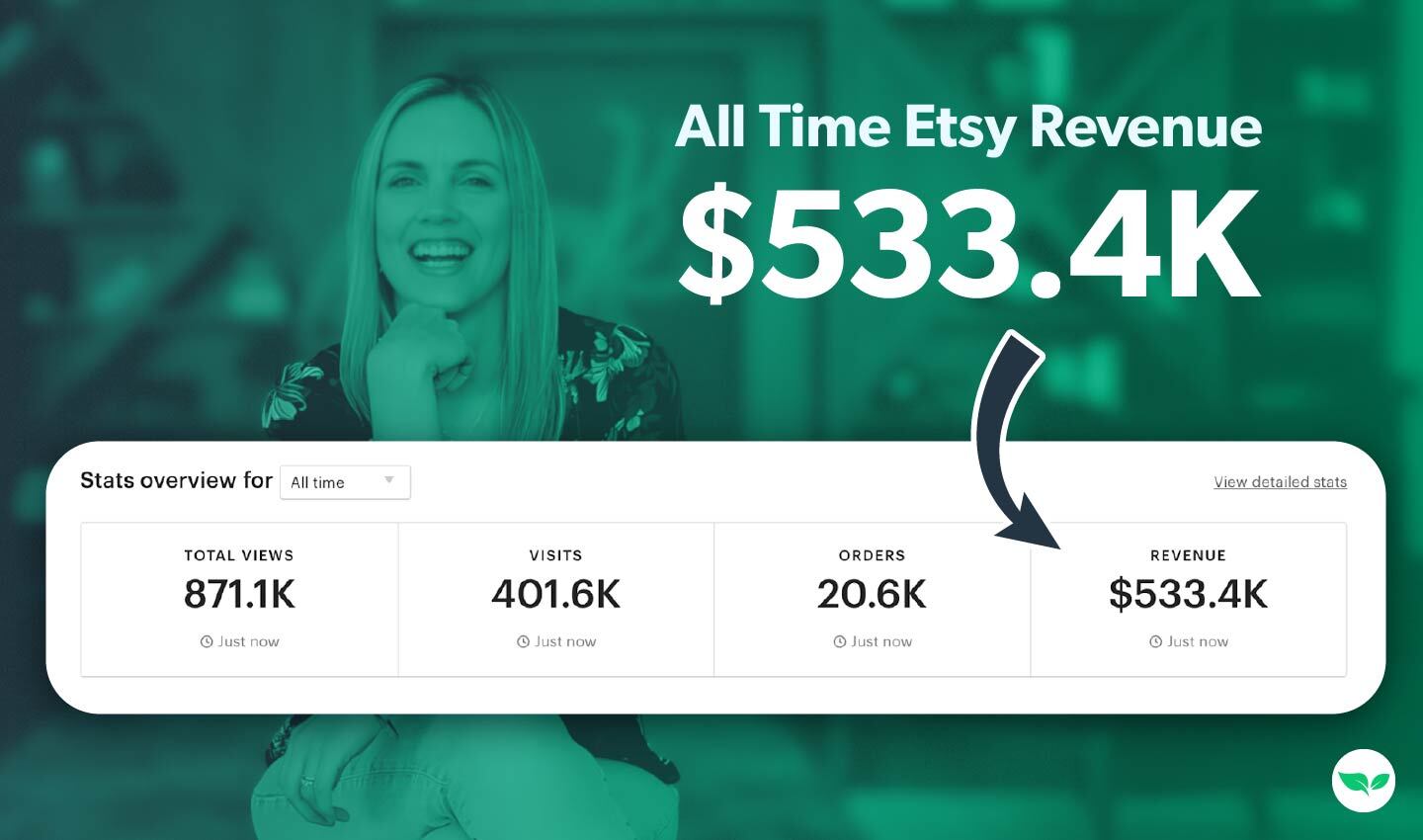
One of her early wins was a quirky, niche candle tailored to spreadsheet lovers—exactly the kind of gift a coworker might give during Secret Santa.
This approach doesn’t just attract clicks—it leads to conversions. And because Etsy’s algorithm rewards listings with strong conversion rates, each successful product gains more momentum organically.
“About 95% of my sales are from organic traffic,” she said. And that’s by design.
Related: 21 Low-Cost or Free Small Business Marketing Ideas
What Sells, What Spikes, and Pricing for Profit
Getting eyes on a product is only part of the game—turning those views into profitable sales is what makes a shop sustainable. That’s where pricing comes in.
“I reverse-engineer my pricing,” Emily said. “I factor in my Printify costs, Etsy’s fees, and the margin I want to hit. Then I check what similar products are selling for and try to land in that middle ground between competitive and profitable.”
Most of her products are priced between $18 and $30. It’s a range that gives gift-buyers confidence while still allowing her to earn meaningful margins—typically around 30% after fees and production.
Timing is just as critical. Her sales spike twice a year: in the spring (Mother’s Day, graduation, end-of-school) and during Q4’s holiday rush. She plans new listings and product launches around these gifting seasons to capitalize on built-in demand.
Instead of chasing trends, Emily builds products around the occasions people already shop for—and the specific people they shop for. It’s not about being the most artistic or original. It’s about being the most obvious solution for someone buying a gift.
“If I can’t picture someone giving it to a person in their life, I won’t list it,” she said.
Related: How to Make $10K a Month: 15 Proven Strategies That Work
Scaling Without Chaos (or a Big Team)
Emily didn’t build a business by outsourcing everything or hiring a team of freelancers. For the first year, she ran it entirely solo—managing listings, responding to customers, tracking inventory, and tweaking designs—all while raising two kids and working full-time.
“I have mostly been a one-person show,” she said. “Until recently, when my mom started helping in my business.”
Her mom now helps with order checks and customer messages, giving Emily more breathing room as the shop grows. But beyond that small support role, the operation is still lean by design.
She intentionally avoids the kinds of products that invite complexity, like sizing charts or made-to-order items, but she does offer personalization options to help customers create more meaningful gifts. That decision reduces customer questions, shipping errors, and the kind of admin tasks that bog down new sellers.
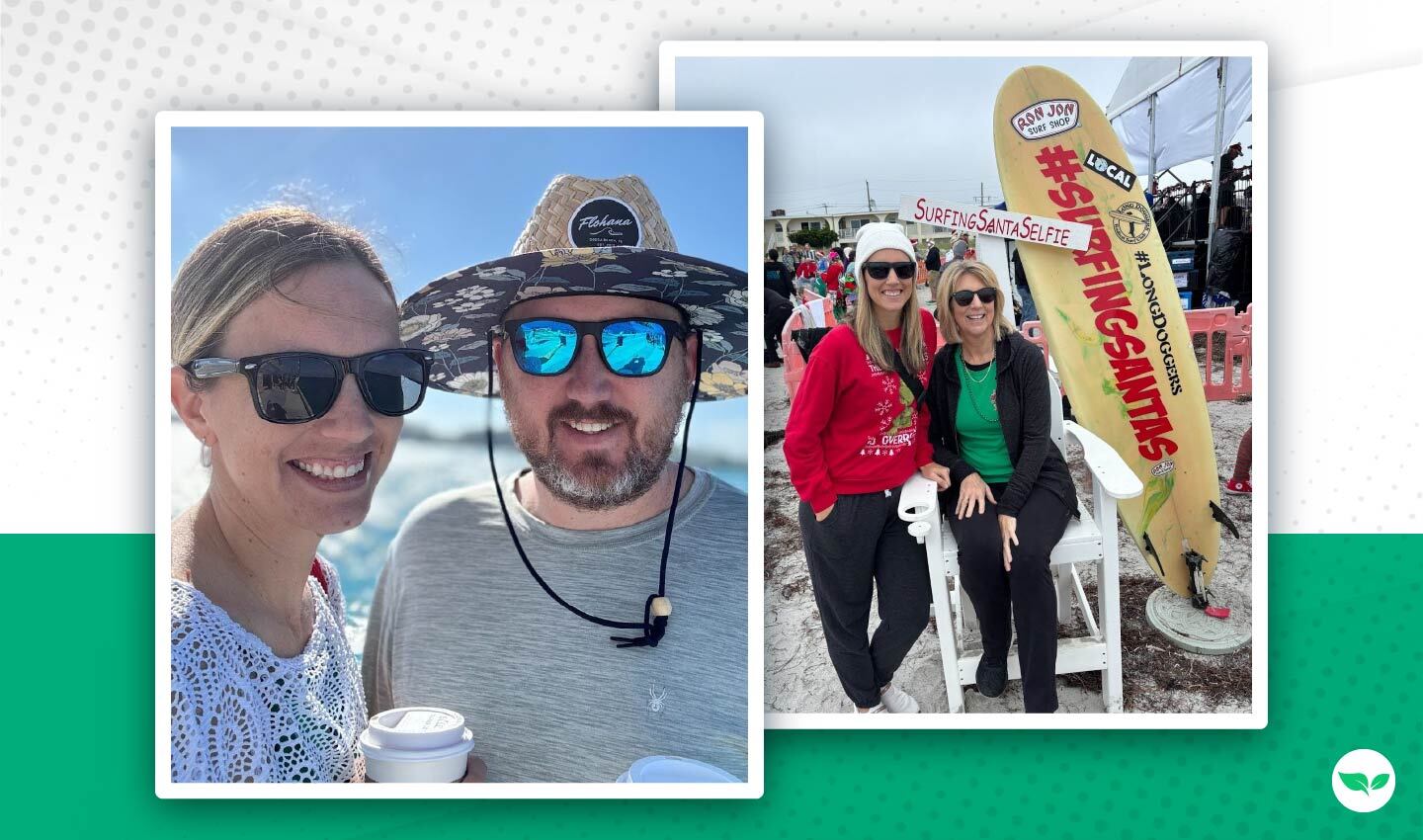
Emily also refined her time management as the business evolved. What began as early-morning hustle sessions has become a repeatable weekly rhythm.
With a catalog of evergreen products and seasonal refreshes baked in, she can now run the shop in just a few hours a week.
“At one point I was juggling dozens of customer messages a day,” she said. “Now, it’s closer to one or two.”
Her version of scaling didn’t involve adding layers of tools or contractors—it meant doubling down on what worked and cutting everything else.
Simple didn’t just sell—it scaled.
Related: The 10 Important Do’s and Don’ts of Choosing a Side Hustle
Real Advice for Aspiring Etsy Sellers
Emily credits much of her success to just a few key principles—ones she believes most new sellers overlook in the rush to launch.
Niche down early. “Don’t try to be everything to everyone—speak to a specific customer with your designs.” Her bestsellers aren’t just candles or journals. They’re gifts for teachers, dog moms, or coworkers who hate meetings. She recommends starting with who you’re designing for—not just what you’re making.
Design for the occasion. “Focus on giftability. Think: who is this for, and what occasion or moment does it celebrate?” This mindset doesn’t just spark product ideas—it’s what helps her listings appear in front of the right buyers at the right time. From Mother’s Day to Secret Santa gifts, Emily frames her products around gifting moments people are actively shopping for.
Simple sells. “You don’t need a fancy design background. Use clean fonts, clear messages, and emotional connection.” Her best-performing products are the ones that look effortless—just a clever phrase, a clear niche, and one or two fonts. She focuses less on being artistic and more on creating “yes” moments for buyers.
Once the core principles are clear, Emily shifts the creative process into research mode.
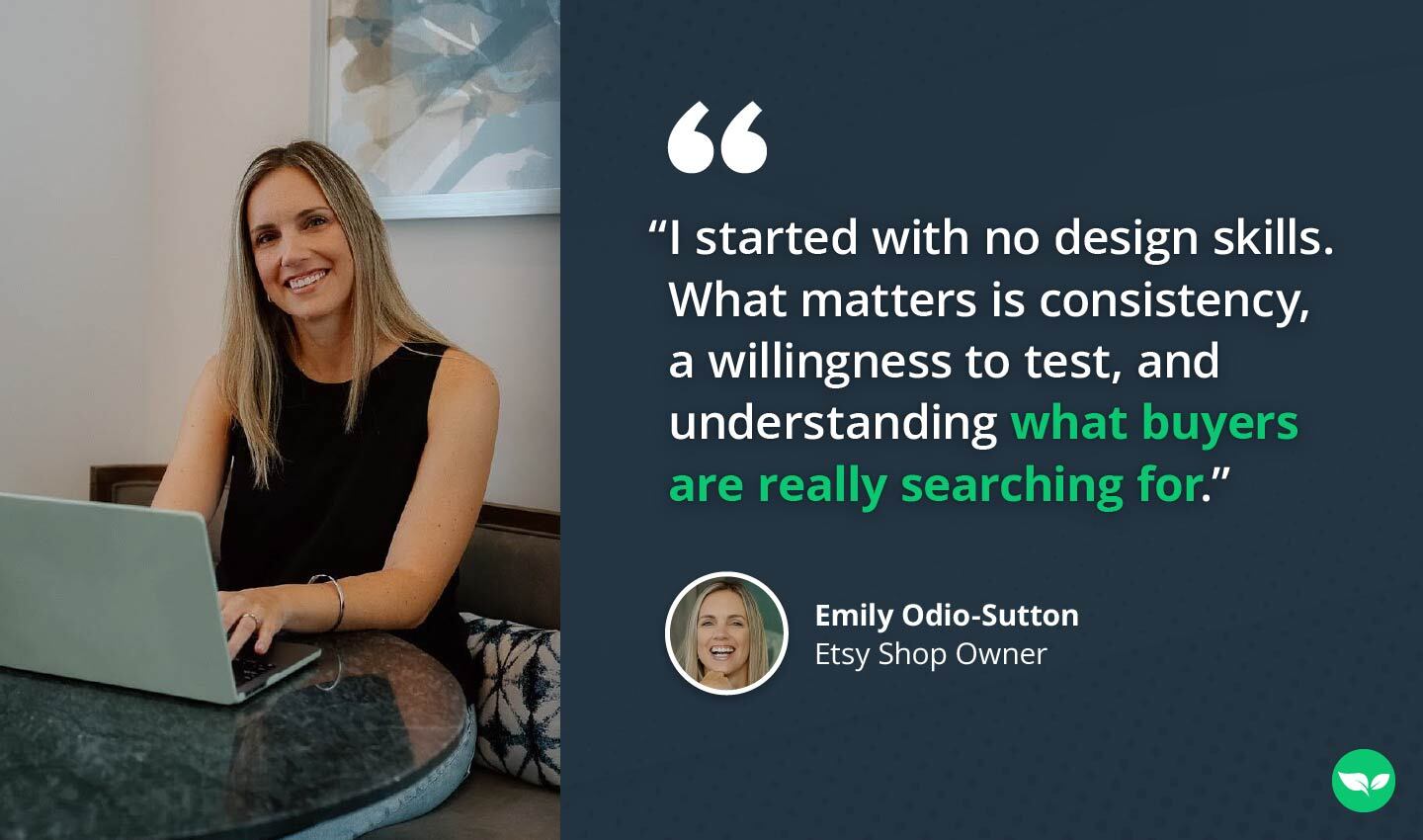
Instead of spending hours in Canva trying to create something unique, she starts by digging into Etsy search data, trend tools, and buyer reviews to figure out what kinds of gifts people are already buying.
She avoids “cute” quotes or trendy designs that look nice but don’t have a clear purpose. If she can’t imagine someone buying it as a gift for a specific person in their life, she moves on to a stronger idea.
And for those unsure if they have what it takes, she’s quick to reassure them: “I started with no design skills. What matters is consistency, a willingness to test, and understanding what buyers are really searching for.”
What Comes Next for Emily
Emily isn’t looking to build a household name or a sprawling e-commerce brand. Her vision for the future is slower, more intentional, and rooted in the same priorities that got her started in the first place: flexibility, family time, and meaningful work.
“I got into print-on-demand because it’s a low-risk, low-expense business that supports my lifestyle as a busy mom,” she said.
Rather than chase scale for the sake of it, she’s looking for leverage. That means continuing to grow her Etsy shop, expanding to other platforms like Amazon or TikTok Shop if the fit feels right, and doubling down on education.
She now coaches students through weekly live calls with Gold City Ventures and helped launch a course called The Gift Lab—a program built around the exact strategies that helped her reach six figures in under two years.
For Emily, this new chapter isn’t just about selling more products—it’s about showing others what’s possible.
What started as a late-night scroll has evolved into a thriving business, a growing community, and a career she never imagined having.
And the best part? She still gets to meet her daughter at the bus stop every afternoon.
Related:
- 19 Flexible Stay-At-Home Jobs for Moms That Pay Well
- 44 Easy Ways to Make Money Fast
- How One Woman Earns $300/Mo Promoting Brands on Social Media

